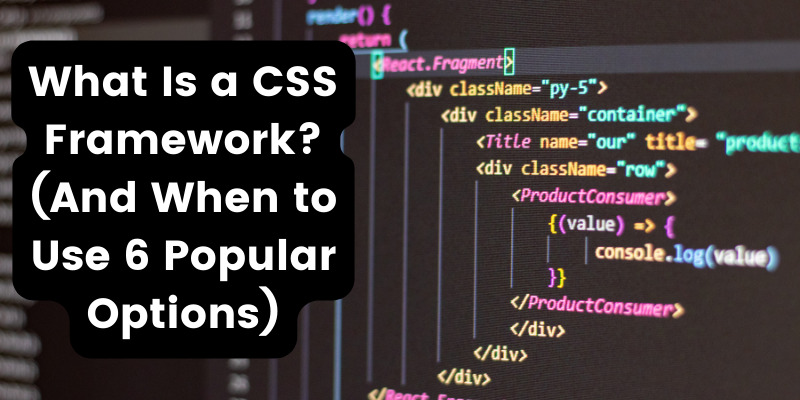Art Bounty
Discover the vibrant world of art and creativity.
CSS Frameworks: The Secret Sauce to Spicy Styling
Unlock the magic of CSS frameworks and transform your styling skills! Discover the secret sauce for eye-catching designs and smooth workflows.
Top 5 CSS Frameworks You Need to Know in 2023
As web development continues to evolve, staying updated with the right tools is essential. In 2023, several CSS frameworks have emerged as front-runners, each offering unique features that cater to the diverse needs of developers. Here are the top 5 CSS frameworks you need to know:
- Bootstrap: The industry standard with a responsive grid system, extensive pre-built components, and robust JavaScript plugins.
- Tailwind CSS: A utility-first CSS framework that allows developers to design custom interfaces quickly.
- Bulma: A modern CSS framework based on Flexbox, which offers a clean and minimal design.
- Foundation: Developed by ZURB, it provides advanced responsive design capabilities along with accessibility features.
- Materialize CSS: A modern responsive front-end framework based on Material Design principles, providing a rich set of components and animations.

How CSS Frameworks Can Revolutionize Your Web Design Process
CSS frameworks have emerged as powerful tools that can significantly enhance your web design process. By providing a pre-defined set of styles and components, these frameworks allow designers to maintain consistency across their projects without having to write extensive custom CSS from scratch. This not only saves time but also ensures that developers can focus on the creative aspects of design. Popular frameworks like Bootstrap and Tailwind CSS come equipped with grid systems and responsive design utilities that make it easier to create visually appealing and mobile-friendly layouts.
Moreover, the use of CSS frameworks promotes collaboration among team members, as they provide a common foundation that everyone can work from. This standardization reduces the likelihood of discrepancies and inconsistencies in design, enabling developers and designers to communicate more effectively. With the aid of built-in components such as buttons, forms, and navigation bars, teams can quickly assemble functional prototypes and iterate on designs without the hassle of starting from scratch. In essence, adopting a CSS framework can revolutionize your web design process by boosting productivity and fostering collaboration.
Is a CSS Framework Right for Your Next Project?
When considering whether a CSS framework is right for your next project, it's essential to evaluate the specific needs of your development process. Frameworks like Bootstrap and Tailwind CSS offer pre-designed components and utility classes which can significantly speed up the initial setup time. This can be particularly useful for projects with tight deadlines or for developers who prefer to focus on functionality rather than design from scratch. However, it’s important to remember that while these frameworks come with a plethora of resources, they can also lead to unnecessary bloat if not managed properly.
Another factor to consider is the learning curve associated with a CSS framework. If you're working within a team, adopting a framework can enhance collaboration, as all team members will be adhering to the same conventions and practices. On the other hand, if the team is unfamiliar with the chosen framework, it may introduce delays in development. Weighing the pros and cons, such as faster development versus a potential increase in complexity, will help you determine if a CSS framework aligns with your project goals.